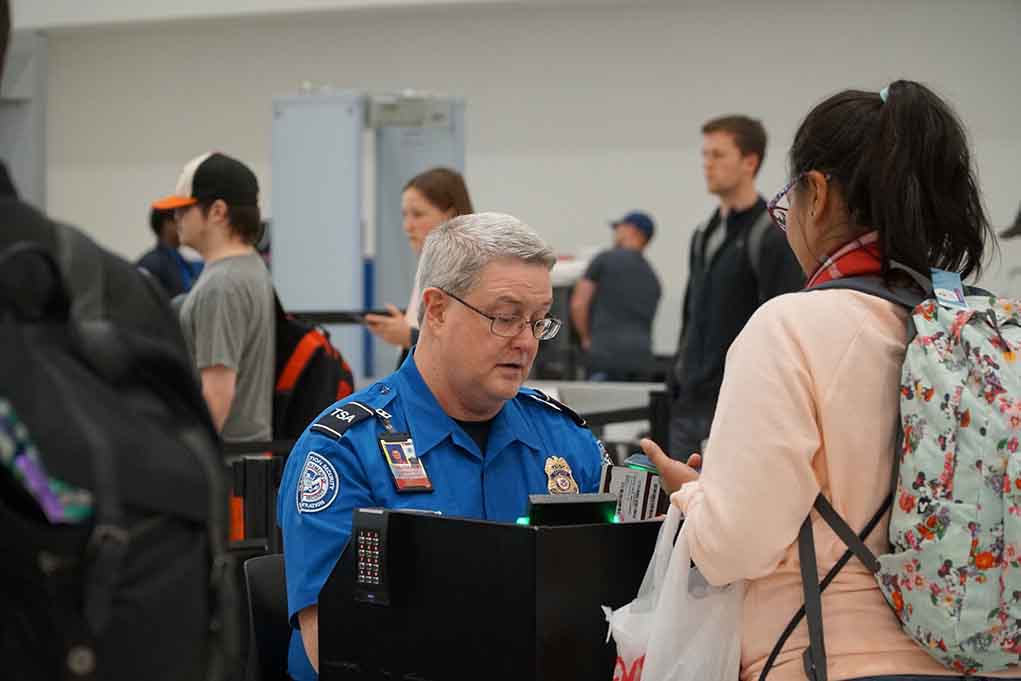
Newark Liberty International Airport is “not safe” according to a whistleblowing air traffic controller, creating a national security crisis and leaving thousands of travelers stranded in what’s quickly becoming America’s most dysfunctional airport.
Key Takeaways
- Newark Airport has lost 20% of its air traffic controllers, forcing United Airlines to cancel 35 daily roundtrip flights due to critical staffing shortages.
- An air traffic controller has publicly deemed the airport unsafe, while equipment failures have caused radar and communication outages.
- The FAA is short approximately 3,000 air traffic controllers nationwide, with Newark’s situation particularly severe.
- Airport infrastructure is deteriorating rapidly with broken escalators, elevators, and poor maintenance throughout most terminals.
- United Airlines CEO warns there is “no way to resolve the near-term structural FAA staffing issues” despite years of warnings to government officials.
Critical Safety Concerns Exposed by Whistleblower
A Newark air traffic controller has come forward with alarming revelations about the airport’s safety conditions, citing chronic understaffing and equipment failures that have created a perfect storm of danger and disruption. Newark has recently lost 20% of its air traffic controllers, leaving the remaining staff overwhelmed and unable to safely manage scheduled flights. This staffing crisis was dramatically highlighted when air traffic control systems recently failed, causing controllers to lose radar contact with aircraft and forcing emergency diversions to other airports.
The situation has deteriorated to the point where United Airlines, which uses Newark as a major hub, has been forced to cancel 35 roundtrip flights daily. This represents a significant admission that the airport simply cannot handle its scheduled capacity. The staffing crisis isn’t just affecting Newark—the FAA is short approximately 3,000 air traffic controllers nationwide, but the situation in New York City’s airspace is particularly critical, forcing mandatory flight reductions across all area airports.
America has real problems—like air traffic systems breaking down. But all the oxygen goes to grievance politics. We need an executive who governs, not performs for the crowd. https://t.co/EIbKAQ280I
— Alex Tabarrok (@ATabarrok) May 4, 2025
Infrastructure Failures Compound Travel Nightmares
Beyond the air traffic control crisis, Newark’s physical infrastructure is in a state of serious disrepair. Travelers regularly encounter broken escalators and elevators throughout the terminals, forcing elderly passengers and those with mobility issues to navigate difficult stairways with luggage. The overall cleanliness and maintenance of the airport facilities have been described as substandard, with the exception of United’s recently remodeled concourse, which stands in stark contrast to the deteriorating conditions elsewhere.
“There is no way to resolve the near-term structural FAA staffing issues,” he said in a letter to customers released Friday evening. said by Scott Kirby, United Airlines CEO
The equipment powering Newark’s air traffic control operations is equally troubling. Recent technology failures have caused significant disruptions, including radar outages that have led to emergency diversions and cancellations. These failures are not isolated incidents but rather symptoms of systemic neglect. Budget cuts at the FAA have exacerbated equipment maintenance issues, leaving critical safety systems vulnerable to breakdown. The surrounding area of the airport has also been described as deteriorating, adding to the overall sense of neglect.
I fly all the time. The system is safe.
But we must build an all new air traffic control system to make sure the system stays safe and prevent outages like Newark. pic.twitter.com/3rlER9nkMw
— Secretary Sean Duffy (@SecDuffy) May 6, 2025
Years of Neglect and Political Inaction
What makes the Newark crisis particularly frustrating is that it could have been prevented. United Airlines CEO Scott Kirby has revealed that his company has been warning government officials for years about the airport’s limitations, yet those warnings went unheeded. The Biden-Harris administration’s failure to address these concerns has directly contributed to the current crisis, forcing airlines to reduce schedules while travelers bear the brunt of delays, cancellations, and unsafe conditions.
“These challenges are not new to Newark. United has been urging the US government for *years* to use its authority to effectively limit the number of flights to what the airport can realistically handle,” Kirby said in his letter. “Past failure to make those changes had led to the circumstances that United and, most importantly, our customers now face. said by Scott Kirby, United Airlines CEO
President Trump’s administration has inherited this infrastructure disaster and is now faced with addressing years of mismanagement. The FAA has announced plans for new air traffic control equipment and measures to improve current technology infrastructure, but aviation experts warn these solutions will take years to implement fully. In the meantime, travelers are advised to prepare for continued disruptions, book flights earlier in the day when possible, and understand that compensation for delays may not be available as these issues fall outside airline control.
The Path Forward Requires Immediate Action
Addressing Newark’s crisis will require significant investment and a willingness to prioritize critical infrastructure over political agendas. Increasing pay to attract more qualified air traffic controllers is an obvious first step, but the problems go far deeper. The entire airport requires comprehensive modernization, from physical infrastructure to technology systems. Until these issues are meaningfully addressed, Newark will continue to represent everything wrong with America’s neglected transportation infrastructure.
“We’re hoping in three to four years we can get to full staffing, not 20 years,” he said. “How do you make up the gap? We can’t snap our fingers to make up the numbers. said by Sean Duffy, Transportation Secretary
For America’s third-busiest airport to be openly described as unsafe by those who operate it represents a profound failure of government oversight and investment. As delays continue to mount and travelers seek alternatives, the economic impact extends far beyond the airport itself, affecting businesses throughout the region. Newark’s crisis serves as a stark reminder of what happens when critical infrastructure maintenance is neglected in favor of wasteful spending elsewhere—a pattern President Trump has vowed to reverse through his America First policies.












